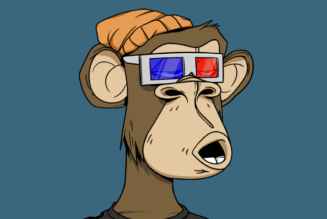
Remember when albums were marketed on TV commercials? (For that matter, remember commercials?) Back in 2003, flipping through channels during a vacation with friends, I was physically startled by the sound of “Inertiatic ESP” — flailing distortion, glass-shatteringly high vocals, drums as mammoth as the Smoky Mountains outside the rec room window of our rental cabin.
Who the fuck is this band?
The very next day, I casually suggested that we — a trio of small-town Bible Belt teenagers without easy access to a music store — make a detour on our drive home to the nearest Best Buy. I scanned the racks and, to my disbelief, found the CD: the Mars Volta’s De-Loused in the Comatorium. Whoa. The glorious Storm Thorgerson artwork (a golden, egg-like head beaming light from inside some kind of creepy laboratory), the surreal song titles (Should I be afraid to board a “Drunkship of Lanterns”?), the mayhem of “ESP” still rattling in my ears.
I’d heard probably 12 seconds of this music, and I probably had $12 in my wallet, but I made the plunge. I was immersed in mysteries, and I had to solve them.
I didn’t, of course. But that’s why I’ve spent the last 18 years revisiting the record over and over, always riveted by a dissonant guitar riff I’ve never spotted or a sparkle of wordplay I knew by heart but never bothered to pick apart. De-Loused is a musical nesting doll — a collision of prog, post-punk, salsa, free-jazz, electronica and folk balladry.
And that makes sense: For guitarist/musical director Omar Rodríguez-López and singer-lyricist Cedric Bixler-Zavala, the album followed their exit from acclaimed post-hardcore band At the Drive-In, along with their dub-reggae experiments in De Facto. De-Loused applied all these lessons and moved even further into the unknown.
The riddle was the point.
The band’s new, career-spanning vinyl box set, La Realidad De Los Sueños, translates from Spanish to “The Reality of Dreams.” It’s a fitting title, given the contents. The centerpiece of the whole project — on top of the remastered audio, elaborately devised packaging, liner notes and revamped artwork — is Landscape Tantrums, the unfinished original De-Loused recordings. A primitive version of the album has been floating around online for years under the name “Summer Demos.” But Tantrums is the holy grail for Volta nerds: a legit, high-fidelity glimpse into their original vision before the big-budget sessions with producer Rick Rubin.
It’s possible that some Volta fans may actually prefer Tantrums’ more direct, abrasive performances over De-Loused’s polished, note-perfect attack. There’s a ragged snarl on the riff of ballad-gone-convulsive “Eriatarka.” “Inertiatic ESP” leans heavier on Jeremy Michael Ward’s druggy vocal effects, with the bass distorted into a punkier shape. (Conversely, that song’s closing electric piano part is more soulful and ornamental than the later take.) Meanwhile, the noise-to-groove ratio on “Drunkship of Lantern” tips toward the former. Tantrums is a clear sibling to the band’s 2002 Tremulant EP — the link between De-Loused and At the Drive-In’s 2000 swan song, Relationship of Command.
La Realidad De Los Sueños digs out a couple of other treasured De-Loused-era rarities: the frantic, widely bootlegged fan-favorite “A Plague Upon Your Hissing Children” (featuring a handful of lyrics that later appeared on 2006’s “Day of the Baphomets”) and a tighter version of Tremulant’s “Eunuch Provocateur.” Given that both could slot easily onto De-Loused without a dip in quality, it’s wild to think they were shelved for so long.
“It is the right time to open these recordings up to the public,” Rodríguez-López said in a statement announcing the box set. “As a work of art in its own right, this set also needs to be seen as the end of a story.” In a way, that’s true: The shitty bootlegs are now irrelevant, and the compositional process has been illuminated.
Still, the core mystery of De-Loused — how they managed to make such madness so endlessly listenable — remains. Landscape Tantrums only enriches it.
Listening now, I drift back to that pivotal encounter in 2003. Leaving the Best Buy parking lot, I unwrapped the package, clicked the CD out of its jewel case and nervously passed up the disc from the minivan’s third row. It was a strange first setting for an hour of music that, I rightly assumed, might knock around my brain like a ping-pong ball. But now my friends were eager to hear these songs, probably just so they could snicker at my failed financial gamble.
Even as a critic, I strive to avoid hyperbole — but in that backseat, my eyes widening to the opening electric piano riff of “Son et lumière,” I was something close to reborn.










